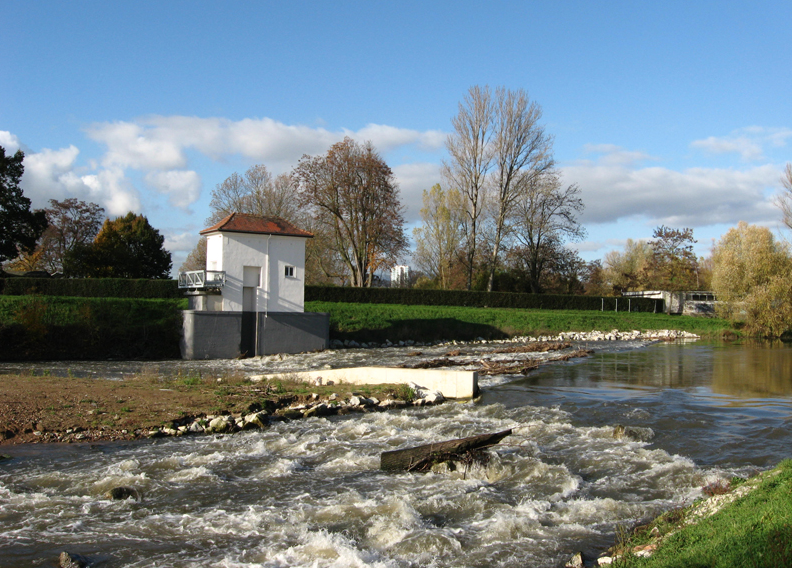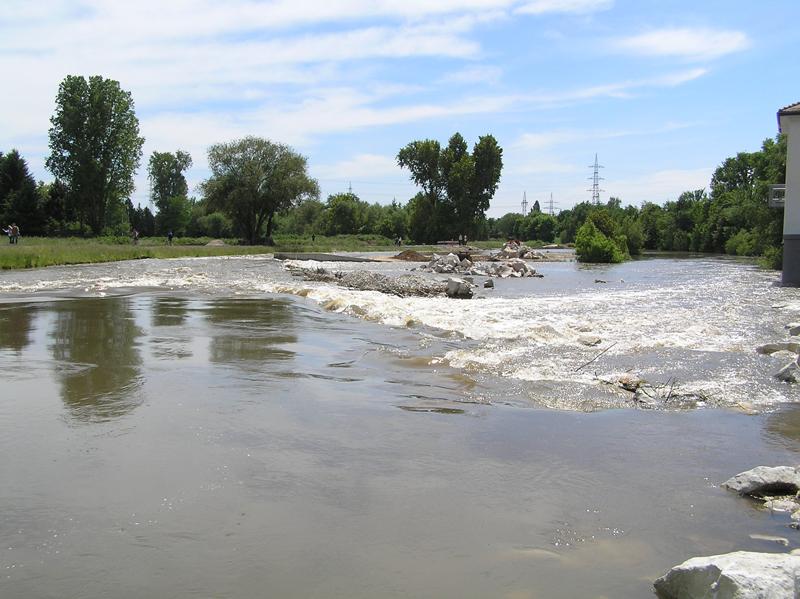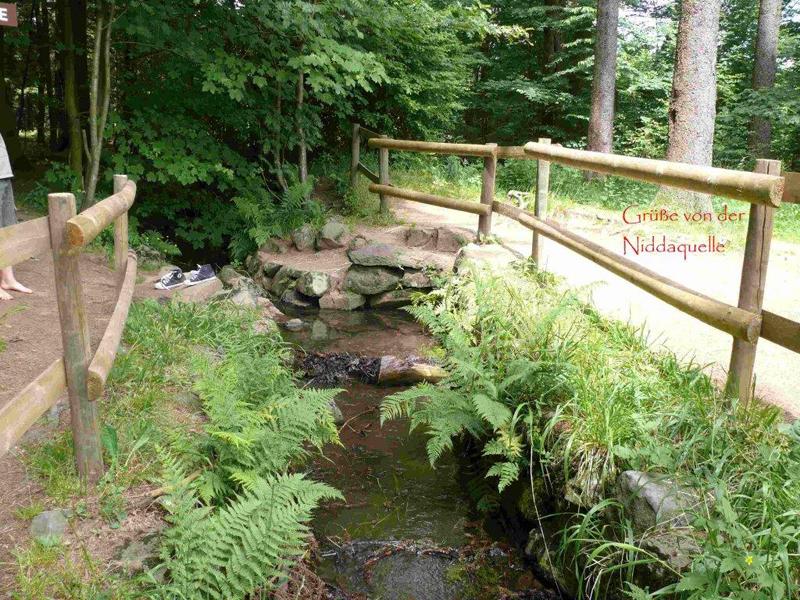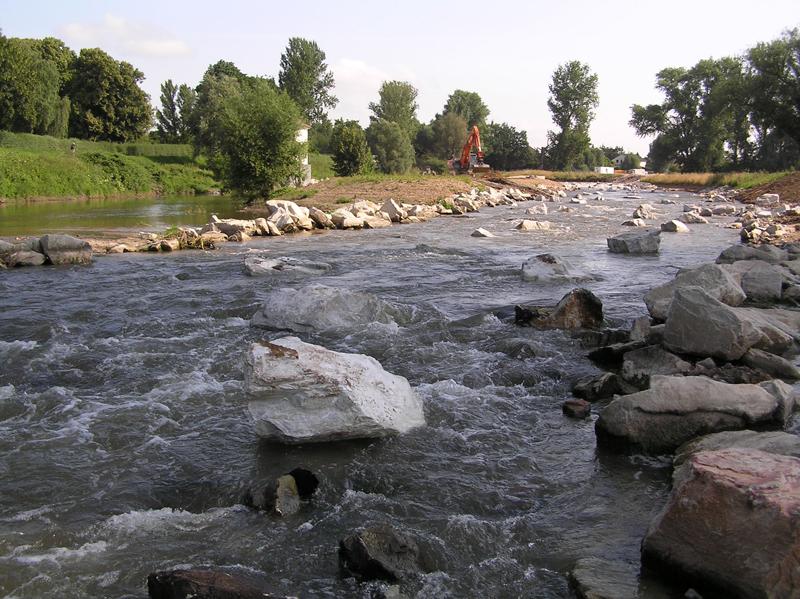The once rich in fish Nidda river in the north of Frankfurt was canalized and dammed in the 20th century. River loops were pierced, filled in or made into oxbow lakes. Newly built weirs stopped the fish migration. The expansion provided good protection against flooding, but the river became a canal (2). In the 1990s, the Nidda neighbours developed a program for the renaturation of the river, the concept "Natural Nidda". It was decided by the city council of Frankfurt am Main in 1998 (2). The project consisted of many measures aiming at the restoration of the natural course and ecosystem of the Nidda river, the creation new habitats for flora and fauna, the expansion of the floodplain area and thus the river's retention capacity, the deconstruction of weirs, the renovation and building of bridges and the reconnection of disconnected branches of Nidda. Besides the environmental aspects, another project goal was to make the riverside more accessible for local offering various ways for relaxation and recreation. (2,7)
Overview
Nature-based solution
- Blue infrastructure
- Lakes/ponds
- Rivers/streams/canals/estuaries
- Green areas for water management
- Sustainable urban drainage systems
Key challenges
- Climate action for adaptation, resilience and mitigation (SDG 13)
- Climate change adaptation
- Water management (SDG 6)
- Flood protection
- Improvements to water quality
- Green space, habitats and biodiversity (SDG 15)
- Habitat and biodiversity restoration
- Health and well-being (SDG 3)
- Creation of opportunities for recreation
Focus
Project objectives
Implementation activities
Climate-focused activities
Climate change adaptation:
- Restore wetlands and/or coastal ecosystems to dissipate the effects of flooding and/or storms
- Implement sustainable urban drainage infrastructure (e.g. to make space for water)
- Renaturalization of rivers and other water bodies
Biodiversity conservation or restoration-focused activities
Biodiversity restoration:
- Restore species (native, endangered, or unspecified)
- Restore native species
- Restore valued species
- Restore ecological connectivity
Main beneficiaries
- Citizens or community groups
Governance
Management set-up
- Co-governance with government and non-government actors
Type of initiating organisation
- Local government/municipality
- Private sector/corporate actor/company
Participatory approaches/ community involvement
- Co-planning (e.g. stakeholder workshops, focus groups, participatory mapping)
- Dissemination of information and education
- Consultation (e.g. workshop, surveys, community meetings, town halls)
- Citizen monitoring and review
Details on the roles of the organisations involved in the project
Project implemented in response to ...
Financing
Total cost
Source(s) of funding
- Public regional budget
- Public local authority budget
- Private equity funds
Type of funding
- Earmarked public budget
- Direct funding (grants, subsidies, or self-financed projects by private entities)
Non-financial contribution
Impacts and Monitoring
Environmental impacts
- Climate change
- Strengthened capacity to address climate hazards/natural disasters
- Water management and blue areas
- Improved water quality
- Increased protection against flooding
- Enhanced protection and restoration of freshwater ecosystems
- Green space and habitat
- Promotion of naturalistic styles of landscape design for urban development
- Reduced biodiversity loss
- Increased number of species present
- Increased protection of threatened species
- Increased ecological connectivity across regeneration sites and scales
Economic impacts
- Unknown
Socio-cultural impacts
- Social justice and cohesion
- Improved access to urban green space
- Health and wellbeing
- Gain in activities for recreation and exercise
Type of reported impacts
Presence of formal monitoring system
Presence of indicators used in reporting
Presence of monitoring/ evaluation reports
Availability of a web-based monitoring tool
References
2. Frankfurt Green City. (2017). Naturnahe Umgestaltung Der Nidda : Stadt Frankfurt Am Main | Dezernat Umwelt Und Gesundheit | Umweltamt. Accessed September 30, 2020, Source link.
3. Stadtentwässerung Frankfurt Am Main. (2017). Home. Website not available
4. Frankfurt Green City. (2017). Water quality. Website not available
5. Hessisches Ministerium für Umwelt, Klimaschutz, Landwirtschaft und Verbraucherschutz. (2015). Hessischer Biodiversitatbericht 2015, Accessed on September 30, 2020, Source link
6. Korte, E. et al. (2007). Fischökologische Untersuchung im Fließgewässersystem der Nidda und ihrer Nebengewässer unter besonderer Berücksichtigung der Fischarten des Anhangs II der FFH-Richtlinie. Accessed on September 30, 2020,
7. Stadtentwässerung Frankfurt Am Main. (n/a). Der Umbau der Wehre: Meilensteine auf dem Weg zur Naturnahe Nidda. Accessed on September 30, 2020. Source link




